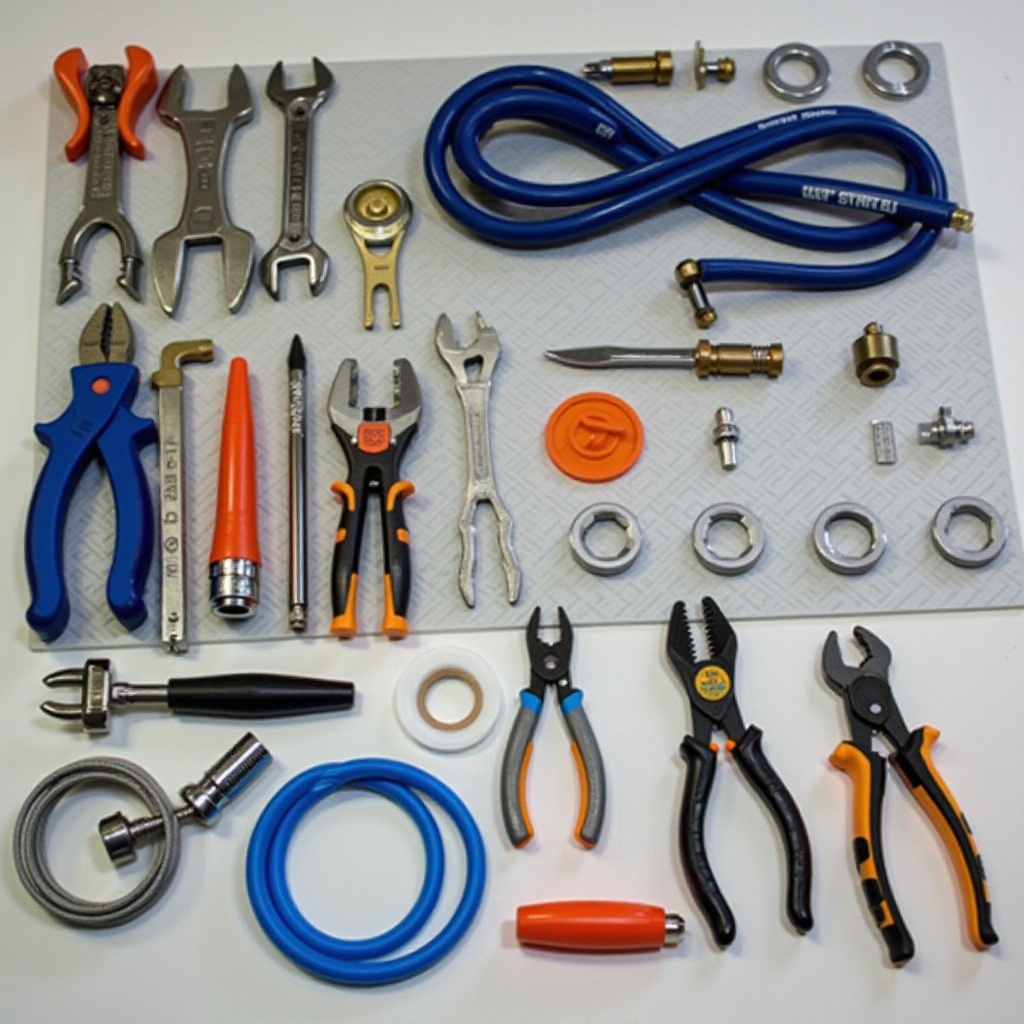Introduction
Installing a dishwasher can seem daunting, but with the right guidance, you can do it like a pro. This guide will take you through each step of plumbing in your dishwasher, ensuring a successful and leak-free installation. By following the steps outlined here, you'll have your appliance up and running in no time, saving you money and the hassle of calling in a professional.

Tools and Materials Needed
Before diving into the installation, it's essential to gather all the necessary tools and materials. Having everything ready will make the process smoother and more efficient.
Tools:- Adjustable wrench- Pipe wrench- Teflon tape- Screwdriver set- Pliers- Drill with hole saw bit- Tape measure- Utility knife
Materials:- Dishwasher installation kit- Water supply line- Drain hose- Electrical wiring (if needed)- Hose clamps- Angle stop valve
With these tools and materials at hand, you are now prepared to start the installation process.

Preparation Before Installation
Proper preparation is crucial for a successful dishwasher installation. Follow these steps to ensure everything is ready before you begin.
Safety Precautions
Safety should always be your top priority. Start by turning off the power to the dishwasher's location at the breaker panel to avoid any electrical hazards. Ensure the water supply is also turned off to prevent any unwanted leaks or flooding.
Disconnecting Power and Water
Locate the water supply line under your sink and turn off the water valve. Disconnect the existing water supply line from the angle stop valve using an adjustable wrench. If there is an old dishwasher, unplug it and remove it from its place.
Measuring the Space
Measure the space where the new dishwasher will be installed. Check the height, width, and depth to ensure the new appliance fits perfectly. Make any necessary adjustments to the cabinetry or surrounding areas to accommodate the new dishwasher.
Detailed Installation Steps
Let's delve into the detailed steps for plumbing in your dishwasher. Follow these instructions carefully to ensure a successful installation.
Step 1: Checking the Plumbing Connections
- Identifying Hot and Cold Water Lines: Locate and identify the hot and cold water lines under your sink. The dishwasher will require a connection to the hot water line for optimal cleaning performance.
- Analyzing Drainage System: Examine your existing drainage system to determine the best way to connect the dishwasher's drain hose.
Step 2: Installing the Water Supply Line
- Connecting the Water Line to the Dishwasher: Use a dishwasher installation kit to connect the water supply line to the dishwasher's inlet valve. Use Teflon tape on the threads to ensure a tight seal.
- Securing Connections to Prevent Leaks: Tighten the connections securely but avoid overtightening, which might damage the threads.
Step 3: Setting Up the Drain Hose
- Proper Drain Hose Positioning: Route the drain hose to the under-sink drain, ensuring it neither kinks nor sags.
- Ensuring a Secure Drain Connection: Attach the drain hose to the sink's drain or garbage disposal using a hose clamp. Ensure a tight and secure connection to prevent leaks.
Step 4: Electrical Connections
- Understanding Electrical Requirements: Make sure your dishwasher is rated for the voltage and amperage of your home's electrical system. Consult the manufacturer's installation instructions.
- Safely Connecting the Dishwasher to Power: Connect the dishwasher's power cord to the electrical service under the sink according to local electrical codes. Use wire nuts to secure the connections and cover them with electrical tape.
Step 5: Securing the Dishwasher in Place
- Leveling the Dishwasher: Adjust the legs of the dishwasher to ensure it sits level. This is crucial for proper operation and to prevent water from pooling inside the appliance.
- Anchoring to the Cabinet: Use the mounting brackets provided with the dishwasher to secure it to the cabinetry. This will keep the dishwasher stable during use.
Testing the Installation
Now that your dishwasher is in place with all connections secured, it's time to test the installation.
Run a test cycle to ensure everything is functioning correctly. Turn on the water supply and power to the dishwasher. Check for any leaks around the water supply line, drain hose, and electrical connections. Listen for any unusual sounds during the wash cycle that may indicate an improper installation.

Post-Installation Tips
To keep your dishwasher running smoothly and efficiently, follow these post-installation tips.
Regular Maintenance Checks
Regularly inspect the water supply line and drain hose for any signs of wear or leaks. Clean the dishwasher's filter and spray arms monthly to ensure optimal performance.
Safety Tips for Users
Always use the recommended amount of dishwasher detergent to avoid over-sudsing, which can cause leaks. Avoid placing items that are not dishwasher-safe in the appliance, and run hot water at the kitchen sink before starting the dishwasher to ensure it fills with hot water from the start.
Conclusion
Plumbing in a dishwasher can be a straightforward task when you follow the correct steps and take necessary precautions. By using this guide, you should now have all the knowledge and confidence to successfully install your dishwasher without the need for professional help. Proper installation will ensure that your appliance operates efficiently and lasts for years to come.
Frequently Asked Questions
How long does it take to install a dishwasher?
The installation process typically takes 1 to 2 hours, depending on your experience and the complexity of the job.
What are the common issues faced during dishwasher installation?
Common issues include leaking connections, improper leveling, and incorrect electrical hookups. Following the steps carefully will help avoid these problems.
Can I install a dishwasher myself, or should I hire a professional?
If you are comfortable working with plumbing and electrical connections, you can install the dishwasher yourself. However, if you encounter any difficulties, it is advisable to hire a professional for a safe and secure installation.
